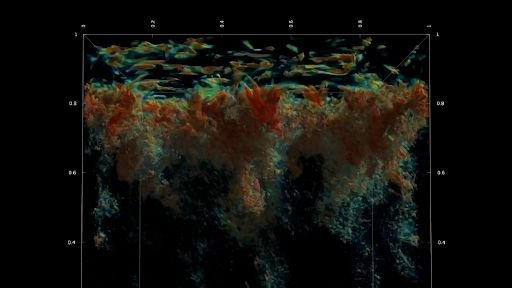Check out a captivating simulation of the sun’s activity from NASA (video).


Watch a mesmerizing simulation of the sun’s behavior from NASA (video) (Image Credit: Space.com)
Even today, our best scientists wrestle to understand the sun’s complex behavior — yet it’s incredibly valuable to decipher the patterns that drive our star’s activity. Those patterns can have a profound impact on our world.
Earth’s weather and ocean currents, for instance, flow from the relationship between our planet and the sun. The sun’s behavior also dictates space weather such as particle radiation that can damage satellites in our planet’s orbit and harm astronauts helping explore the harsh environment beyond Earth. But to connect the dots and identify solar activity patterns, we need to begin by decoding the intricacies of the sun itself.
Sure enough, last week, NASA released 3D simulations detailing some of the sun’s behavior. The simulation shows turbulent flows of materials moving upward from the sun’s inner layers toward its atmosphere, as the materials twist and evolve during the journey.
The mesmerizing visualization of the fine structure movements within the sun looks like rainbow-colored oil roiling through a cube of black still water. The simulations use a color-coded scale with the fastest movements through the sun’s layers in bright red, which then turn to yellow, green, and blue as the movement slows. It’s almost too quick and complex for the eye to follow.
“Right now, we don’t have the computational capabilities to create realistic global models of the entire sun due to the complexity,” NASA scientist Irina Kitiashvili, who works at Ames Research Center in California’s Silicon Valley and helped lead the study, said in a statement.
“Therefore,” Kitiashvili continued, “we create models of smaller areas or layers, which can show us structures of the solar surface and atmosphere — like shock waves or tornado-like features measuring only a few miles in size; that’s much finer detail than any one spacecraft can resolve.”
Creating the simulations was quite an undertaking. The research team ran them on the Pleiades supercomputer (named after the star cluster in the Taurus constellation), which is housed at the NASA Advanced Supercomputing facility at NASA Ames. The simulations ran for a few weeks and generated terabytes of data.
“Our simulations use what we call a realistic approach, which means we include as much as we know to-date about solar plasma to reproduce different phenomena observed with NASA space missions,” Kitiashvili said.
The data used for the simulations was gathered by NASA’s Solar Dynamics Observatory (SDO). Launched in 2010 on an Atlas V rocket into a geosynchronous orbit, the observatory is one of many spacecraft that NASA uses to monitor the sun and its phenomena.
In April, the SDO observed a quadruple eruption of solar flares. The rare event was caused by a buildup of magnetic energy in the solar atmosphere, which then emitted bursts of electromagnetic radiation.
“The sun keeps surprising us,” said Kitiashvili, regarding the simulations. “We are looking forward to seeing what kind of exciting events will be organized by the sun.”







